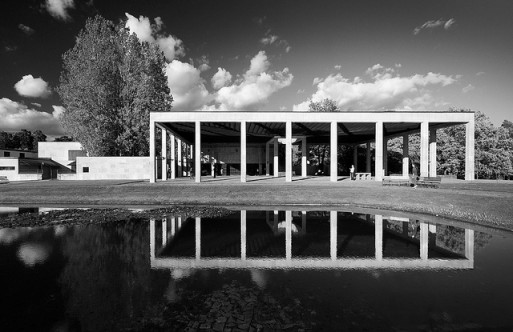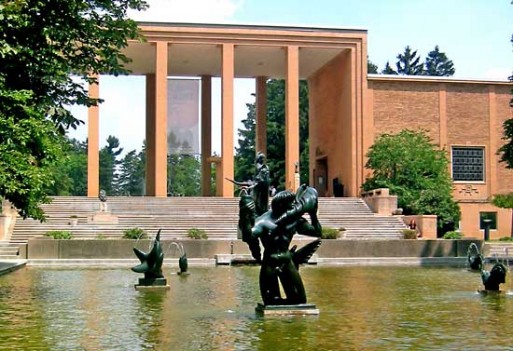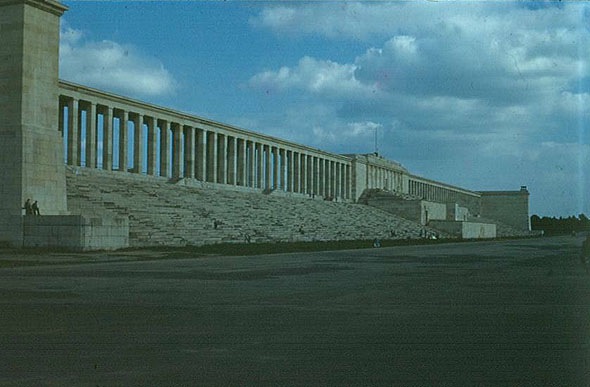In the past we have presented a variety of lovely architecturally-worthy crematorium designs: See the Island Crematorium of Rocky Island, Ireland, and the Ashwinlkumar Crematorium of Surat, India. Today I want to address just how much the design of a building can reveal about its creators.
Recently I was excited to stumble on the modern Skogskyrkogarden, which in English is The Woodland Crematorium, located in Sweden and designed in 1940 by Swedish architect Erik Gunnar Asplund. Woodland Crematorium is a very popular Swedish tourist stop. It’s a striking example of modernism, and is at first glance quite elegant.
Then I took a second look and this image gave me the chills – I’ll repeat “the chills.” I immediately realized it was not just another pretty building.
Here’s the Cranbrook Academy of Art Peristyle located in Bloomfield Hills, Michigan designed in the 1940’s by Eliel Saarinen, a Finnish architect. To the right of the peristyle is an art museum and to the left is a library. Notice how similar the designs are? They were both designed around the same time. The similarities are no coincidence; as anyone who has studied architecture is well aware, architects influence each other. I was aware that this building was inspired by a design of the German architect Albert Speer. Years ago, when I learned this, Google images did not exist.
The above image is Zeppelin Field designed by Albert Speer in 1932. Albert Speer was Hitler’s architect and Zeppelin Field was the Nazi party rally grounds. Not only are all three of these designs similar but also note that Zeppelin Field was designed and built first. So both Asplund and Saarinen were inspired by Speer’s Nazi architecture. (In case you were wondering, Albert Speer was inspired by the Pergamon Altar, one of the most famous items in the Berlin Collection of Classical Antiquities.)
If you think perhaps Saarinen and Asplund were also simply influenced by Pergamon Altar, think again. I was raised in Dearborn, Michigan and am well aware that Henry Ford, who also lived in Dearborn, was an anti-Semite with a group of like-minded friends that included George Booth (who built Cranbrook), Charles Lindbergh (I went to Lindbergh Elementary School), and Hitler, to name a few you’d be familiar with. Was Asplund an anti-Semite too?
I think it would be safe to say that the similarities and influences of these projects are quite obvious. Isn’t it? All of this having been said, note that The Woodland Crematorium is (I repeat) a crematorium. Given the time period, world politics, and architectural influences, I’d say the Nazi-inspired design is completely inappropriate.
What’s your take on this?
- To learn more about Zeppelin Field see Nuremberg Municipal Museums, which manage all of Nuremberg, Germany’s museums including the Documentation Centre Nazi Party Rally Gounds.
- To visit beautiful Cranbrook in Bloomfield Hills, Michigan and to tour the house, gardens, and Greek Theater where George Booth lived and entertained his friends, as well as view the peristyle at the Cranbrook Academy of Art, see here.
Skogskyrkogarden Portico courtesy of Hassan Bagheri.

 Three Buildings With One Singular Message
Three Buildings With One Singular Message






 Funeral Favors Offer Visitors a Tangible Memento
Funeral Favors Offer Visitors a Tangible Memento
 “Comeback” by Prince
“Comeback” by Prince















